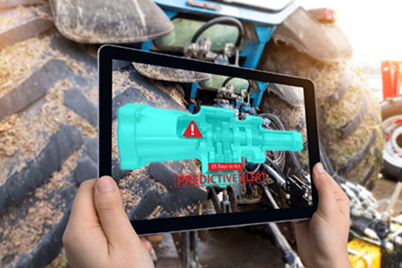Extracting actionable insights from IoT data to drive more efficient manufacturing
Thanks to the explosion of IoT we now have millions of devices, machines, products, and assets connected and streaming terabytes of data. But connecting to devices, ingesting and storing their sensor data is just the first step. The whole point of collecting this data is to extract actionable insights — insights that will trigger some sort of action that will result in business value such as:
- Optimized factory operations: reduce cycle time, increase throughput, increase machine utilization, reduce costs, reduce unplanned downtime.
- Improved product quality: reduce manufacturing defects, identify design features that are causing manufacturing problems.
- Better understanding of customer demand: validate usage assumptions, understand product usage patterns.
- New sources of revenue: support attached services, Product-as-a-Service models.
- Improved customer experience: respond more quickly to issues, help them optimize their usage of your product.
Extracting insights from IoT data is essentially a big data analytics challenge. It’s about analyzing lots of data, coming in fast, from different sources and in different formats. But it’s not your garden-variety analytics problem because: (1) data comes from “things” (as opposed to from humans or other software systems), (2) IoT data is almost always real-time, streamed, time-series data, coming in at different frequencies, and (3) IoT data often supports scenarios that require real-time decisions.
What are the things we typically want to do with IoT data (once we collect it and store it)? In order of sophistication:
- Visualize it: to answer “What’s happening?” questions.
- Analyze it: to answer “Why is this happening?” questions.
- Make predictions: to peer into the future to answer “What’s going to happen?” questions.
- Act on the insights: is about doing something with the insights we extracted. Usually to fix or improve something.
With end actions ranging from sending a simple command to a machine, to tweaking operational parameters, to performing an action on another software system, to implementing company-wide improvement programs.
IoT solutions are complex and contain lots of moving parts. As someone tasked with implementing an IoT solution for your company, it may be hard to understand exactly what you should build versus what you should buy. The IoT market is still very fragmented and in flux, and the lines between what’s a platform and what’s a solution are often blurry.
Recommended next steps
To help you get started today, cut through the overwhelming amount of information and provide a path for your company to take the first actionable step in using an IoT solution, we just released the Extracting insights from IoT data overview. Here you can learn more about the value of IoT data, the anatomy of an IoT solution, available options for IoT data analytics, how to act on the insights you extract, and build vs. buy considerations. Listen from software vendors developing IoT solutions on Azure and from customers extracting real value out of their IoT investments.
I post regularly about new developments on social media. If you would like to follow me you can find me on Linkedin and Twitter.
Source: Azure Blog Feed

